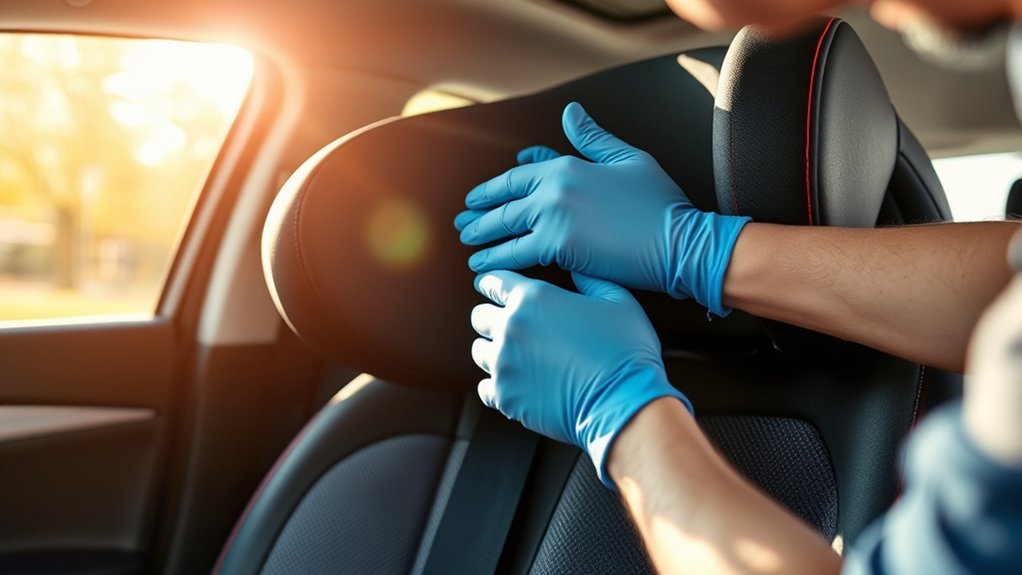When it comes to car seat safety, ensuring your child’s protection is paramount. You’ll want to start with the right car seat tailored to your child’s age and size. It’s crucial to install it correctly, as even the best seat won’t function properly if not secured. Regular checks can help maintain safety, but how do you know when it’s time to replace your car seat? Let’s explore the critical steps to keep your child safe on the road.
Choosing the Right Car Seat for Your Child
When you’re choosing the right car seat for your child, understanding the various options available is essential for their safety.
Start by considering your child’s age, weight, and height, as these factors determine the appropriate type of seat. Infants typically require rear-facing seats, while toddlers may shift to forward-facing options.
Don’t forget to check the seat’s safety ratings and compatibility with your vehicle. It’s also important to look for features like a five-point harness, side-impact protection, and easy adjustments.
Keep in mind that your child’s comfort matters too; verify the seat has adequate padding.
Installing the Car Seat Correctly
Although it might seem straightforward, installing a car seat correctly is essential for your child’s safety. Start by reading the manufacturer’s instructions, as each seat can have unique requirements.
Place the car seat in the back seat, as it’s the safest spot. Confirm the seat is level according to the built-in indicators, and use either the seatbelt or LATCH system for installation.
If you’re using the seatbelt, make sure it’s locked and snug against the car seat without any slack. Test the installation by pulling at the base; it shouldn’t move more than an inch side to side or front to back.
Double-check everything before placing your child in the seat, as a secure installation can save lives.
Securing Your Child in the Car Seat
After ensuring your car seat is installed correctly, the next step is to secure your child safely in it.
Start by placing your child in the seat, making sure their back is flat against the seat back. For harnessed seats, pull the straps over their shoulders and buckle the clip at their chest level. The harness should be snug—try to pinch the straps; if you can, it’s too loose.
Place your child in the seat, ensuring their back is flat, then secure the harness snugly over their shoulders.
Adjust the harness height to match your child’s shoulders, ensuring it’s at or just above for rear-facing seats and at or just below for forward-facing.
Finally, check that the seat is secure by giving it a gentle shake. This way, your child is protected and comfortable for every ride.
Conducting Regular Safety Checks
Conducting regular safety checks on your car seat is essential for guaranteeing your child’s protection during every journey.
Start by inspecting the harness straps for any signs of wear or fraying. Ensure they’re tight enough to keep your child secure but not so tight that they’re uncomfortable.
Check the car seat’s installation; it should fit snugly against your vehicle’s seat without excessive movement. Verify that the seat is appropriate for your child’s age, weight, and height, and adjust the recline angle as necessary.
Don’t forget to clean the seat, removing any debris or spills, which can affect its functionality.
Understanding Car Seat Expiration and Replacement
Even with regular safety checks, it’s important to remember that car seats have a limited lifespan.
Typically, most car seats expire after six to ten years from the manufacturing date, which you can usually find on a label.
Over time, materials can degrade, impacting safety performance in a crash.
Always check the expiration date before using a seat, as using an expired one can put your child at risk.
If your car seat’s been involved in a crash, it’s best to replace it, regardless of its age.
Keeping your child safe is your top priority, so don’t hesitate to invest in a new car seat when necessary.
Regularly review the manufacturer’s guidelines for updates on safety and replacement recommendations.
Frequently Asked Questions
How Can I Tell if My Car Seat Is Safe After an Accident?
After an accident, you should inspect your car seat for cracks or damage, check the harness for fraying, and consult the manufacturer’s guidelines. If in doubt, replace it to guarantee your child’s safety.
Are There Car Seat Safety Checks Offered by Local Organizations?
Yes, many local organizations offer car seat safety checks. You can usually find them through hospitals, fire departments, or community centers. It’s a great way to guarantee your child’s safety on the road.
What Age Can My Child Transition to a Booster Seat?
Your child can typically shift to a booster seat around age 4, but it’s essential to take into account their weight and height. Always check your car seat’s guidelines to guarantee a safe and proper fit.
Can I Use a Second-Hand Car Seat?
You can use a second-hand car seat, but make certain it’s in good condition, hasn’t been recalled, and comes with a manual. Always check the expiration date and avoid seats older than six years for safety.
What Should I Do if My Car Seat Is Recalled?
If your car seat’s recalled, don’t panic. Check the manufacturer’s website for details, follow their instructions for returns or replacements, and guarantee your child’s safety by promptly switching to a safe, reliable seat.
Conclusion
In the blink of an eye, your child grows, and so does the need for car seat safety. By following these step-by-step checks, you can guarantee their protection on every journey. Remember, a snug harness, a properly installed seat, and regular maintenance aren’t just tasks—they’re essential acts of love. So, make those checks a routine part of your drive because every time you buckle up, you’re choosing safety and peace of mind for your little one.
